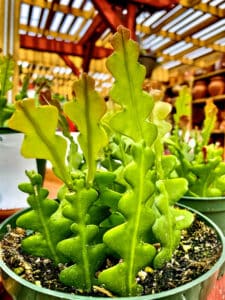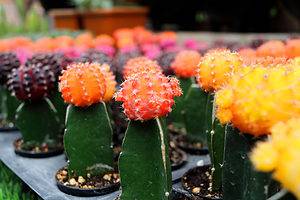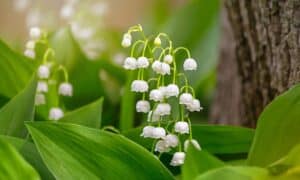Pilea Peperomioides, commonly referred to as the Chinese money plant, is a popular houseplant with a fascinating history. Pilea Peperomioides, a relatively new kid on the block, is a hardy plant that is easy to grow and propagate. Whether you’re a complete novice or a green thumb grower with loads of experience, Chinese money plants are a splendid addition to your home or office. Ancient Chinese legends and modern urban myths suggest that the owner of a Chinese money plant will become prosperous and wealthy. You can learn more about the meaning of the Chinese money plant here. Keep reading to learn everything you need to do to keep your Pilea Peperomioides healthy.
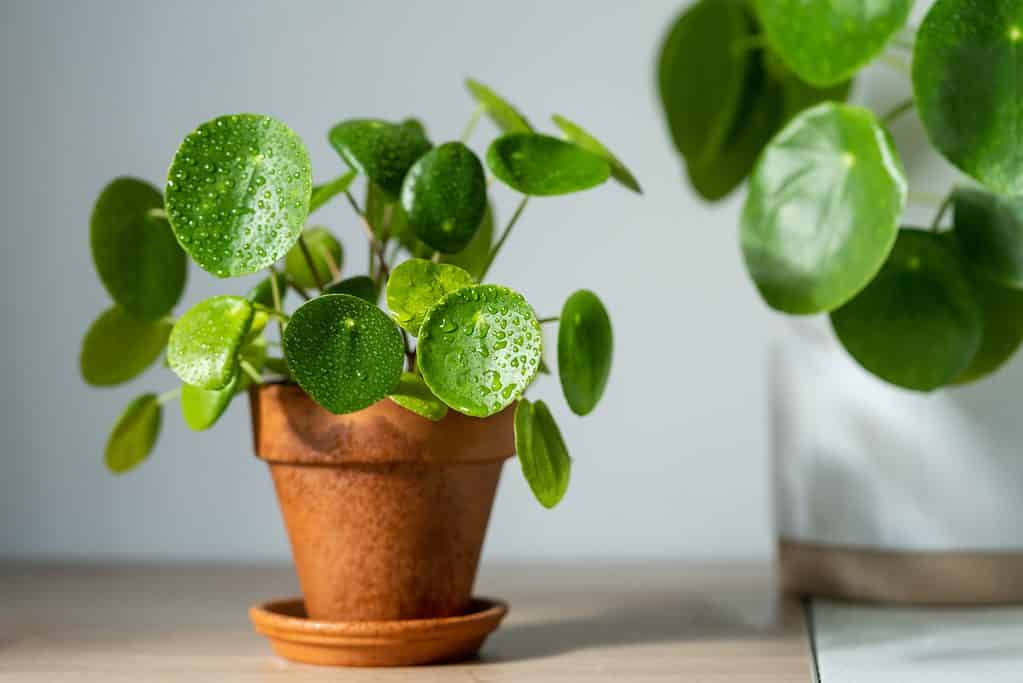
Chinese money plants are a splendid addition to your home or office.
©DimaBerlin/Shutterstock.com
| Classification | Pilea peperomioides |
|---|---|
| Kingdom | Plantae |
| Phylum | Tracheophyta |
| Class | Dicotyledon |
| Order | Rosales |
| Family | Urticaceae |
| Genus | Pilea |
| Species / Scientific Name | Pilea peperomioides |
| Nicknames | Chinese money plant, missionary plant, friendship plant, pass-along plant, UFO plant, pancake plant, coin plant |
| Appearance | Evergreen perennial with round, green leaves of up to 4 inches in diameter. Each leaf is on the end of its stem. Offsets grow at the base of established plants. |
| Optimal Growing Conditions | USDA Zones 10-12; Grown mostly as a houseplant in the U.S.; prefers bright indirect light; water thoroughly when the top 2 inches of soil are dry to the touch. |
Pilea Peperomioides: History
Pilea Peperomioides is native to the Cangshan or Cang Mountains in the Yunnan province located in Southwest China. This area was first documented for its diversity of plant life in 1882 by Père Jean-Marie Delavay. Delevay (1834-1895) was a French missionary/botanist. Delavay introduced 100s of plant specimens from the area, but the Chinese money plant was not among them.
George Forrest
The Scottish botanist George Forrest (1873-1932), is credited with bringing Pilea Peperomioides to the Western world. George Forrest led a fascinating life. While fleeing almost certain death at the hands of groups of militant Chinese, foraging in the jungles of China to survive, this man continued to collect plant specimens. He was definitely a glass 1/2 full kinda guy. Forrest brought back specimens of Chinese money plants to Scotland in 1906 and 1910. However, his specimens were left all but forgotten and uncataloged until after his death. It wasn’t until the middle of the 20th century when Norwegian missionary Agnar Espegren brought Pilea Peperomioides back from China that it became widely known in the West.
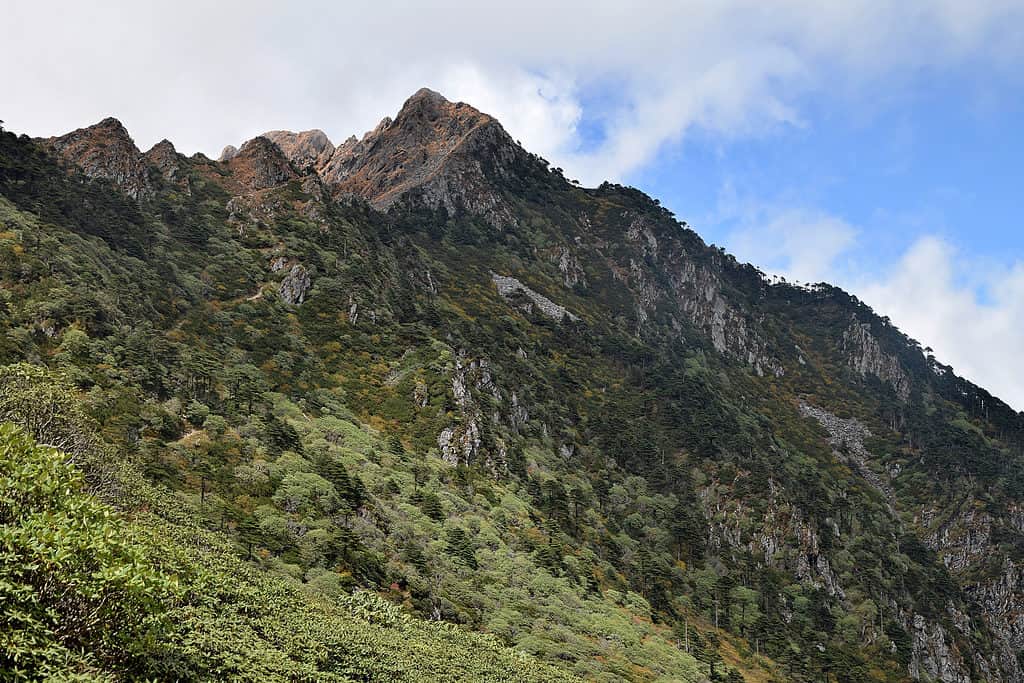
is native to the Cangshan or Cang Mountains in the Yunnan province of Southwest China.
©Lao Ma/Shutterstock.com
Agnar Espegren
Espegren and his family were forced to leave China, though with a bit less intrigue than George Forrest. As they were leaving the country, Espegren was either given or purchased a Chinese money plant. Soon after, the Espegren family, boarded a flight, landing safely in Calcutta (Kolkata again as of 2001), India. The family stayed in India for almost a year.
Upon his return to Norway in 1946, Agnar Espegren discovered the all-but-forgotten money plant in his luggage. Amazingly, the plant was still alive! Once he began to care for it, the plant rewarded him with dozens of offsets. Offsets are miniature clones of the original plant that appear around its base. Offsets, as Espergren discovered, are easily propagated. Plentiful as they are he shared them with friends, family, and colleagues throughout Norway and Sweden. And the rest, as they say, is history!
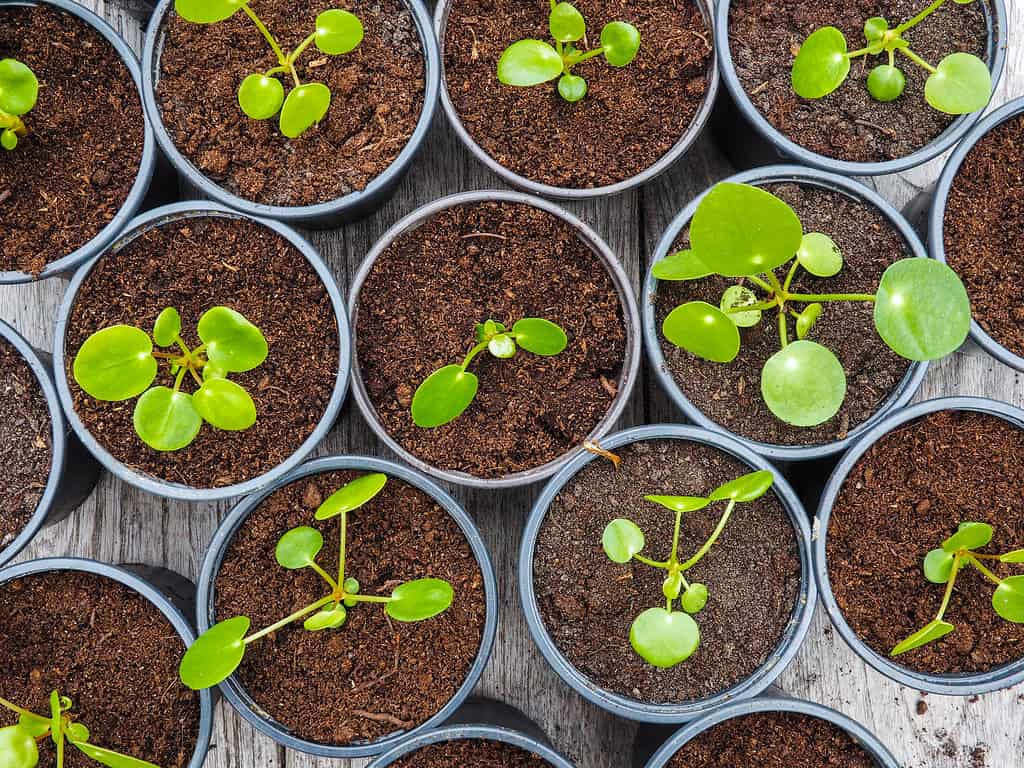
Offsets are easily propagated.
©Luoxi/Shutterstock.com
The plant that Espegren brought home in 1946 produced offsets that eventually spread across Europe and to North America in the following years. Chinese money plants have only become widely available in the U.S. in the 21st century. Chinese money pants in the U.S. were traded among plant enthusiasts, often sold for exorbitant prices, until circa 2010. Luckily, Pilea Peperomioides is now widely available at locally owned nurseries as well as big box gardening centers. So, what are the best practices for keeping a Chinese money plant healthy?
Pilea Peperomioides: Soil
As long as the mercury doesn’t dip below 40 degrees F, Chinese money plants will grow outdoors in USDA Zones 10-12. However, the majority of Chinese money plants in the Continental U.S. grow as houseplants. Chinese money plants aren’t terribly particular about their soil. They are hardy plants, but they grow best in an organic potting mix that contains coconut coir, peat moss, and perlite. This mixture retains moisture and airiness in equal measure, which is just the way Pilea Peperomioides like it. Many commercially available mixes are suitable for your Pilea Peperomioides. To delve into what it takes to keep your indoor Chinese money plant thriving, read about it here.
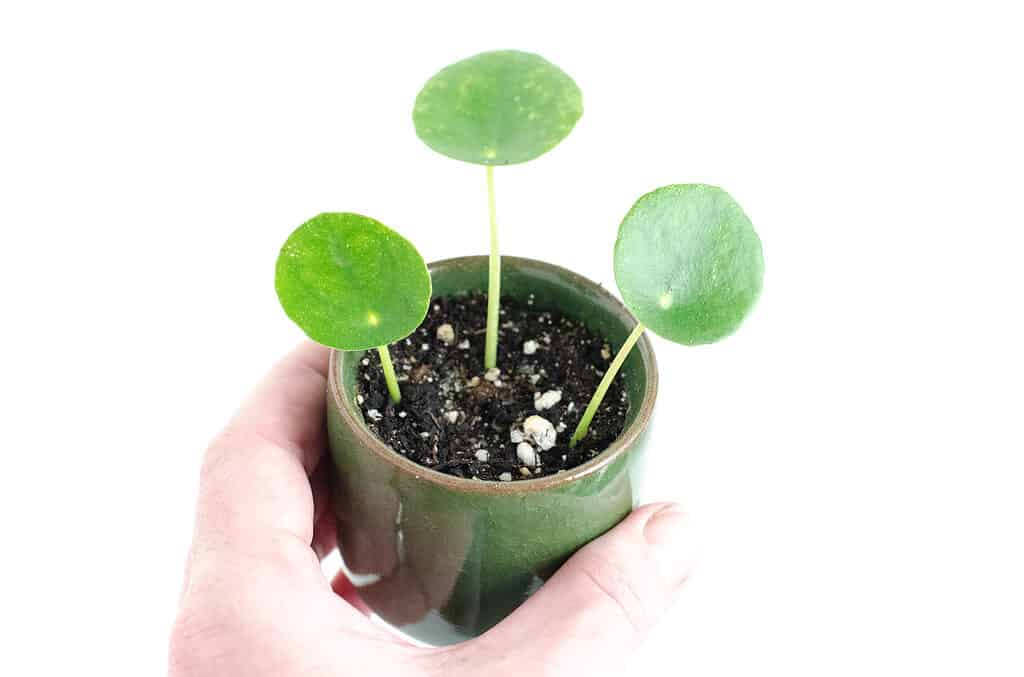
Chinese money plants grow best in an organic potting mix that contains coco coir, peat, and perlite.
©Pegasene/Shutterstock.com
Pilea Peperomioides: Light
The popularity of Pilea Peperomioides may stem from its undemanding nature. Much like its lack of discrimination concerning soil, Chinese money plants will grow in a variety of lighting situations. The amount of light your Chinese money plant receives depends on where the windows are located, as well as where the plant is placed, in a room. The only places these easygoing plants won’t grow are in rooms with only north-facing windows, or in rooms with no windows at all. However, thanks to modern technology, Chinese money plants can be grown in low-light environments using grow lights. For more information regarding light requirements for your Pilea Peperomioides, check out this article.
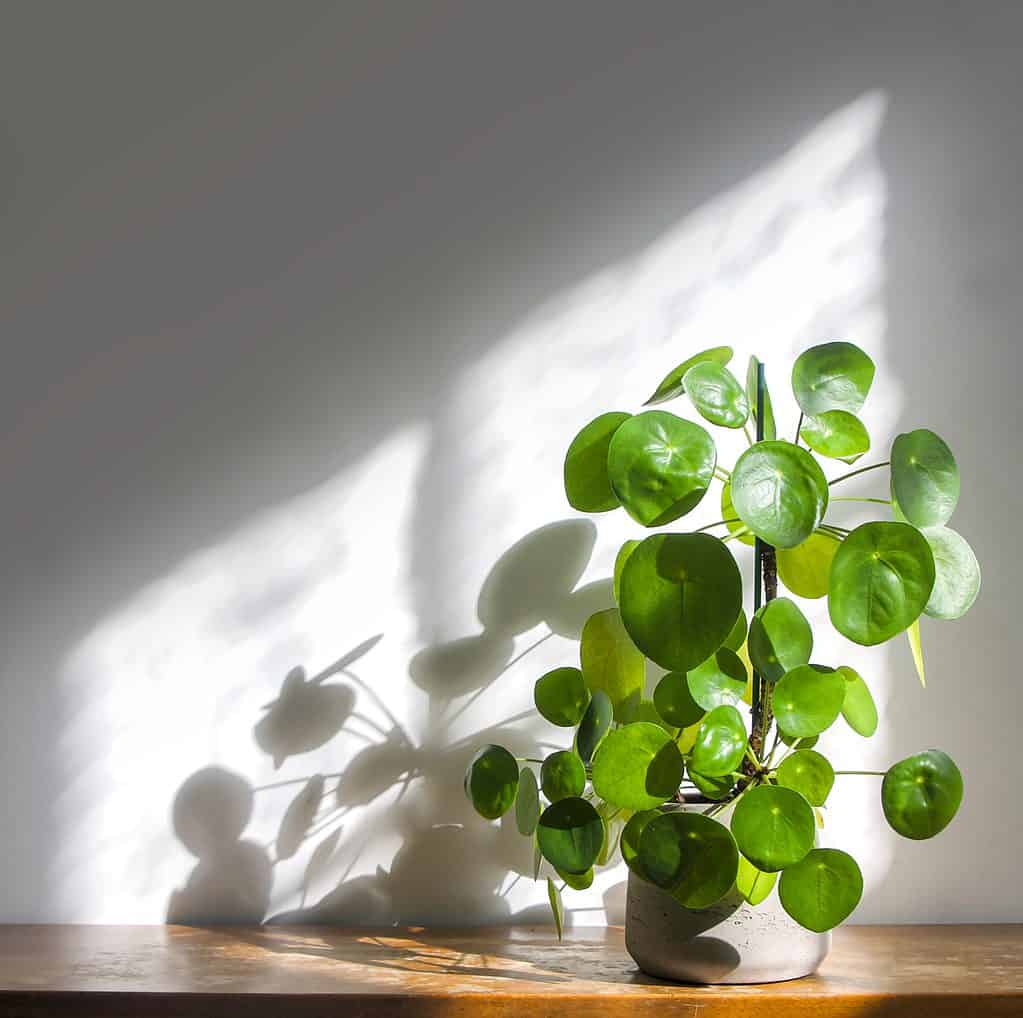
Chinese money plants will grow in a variety of lighting situations.
©Kulbir G/Shutterstock.com
Chinese Money Plant: Watering
Whereas Chinese money plants aren’t finicky about their soil or light requirements, they do require a modicum of care and thought as to watering. Do not overwater your Chinese money plant. Period. Chinese money plants get most of their energy from rhizomes that grow beneath the soil. Gossamer thin, threadlike roots anchor the rhizomes in place, and while they do take up a bit of water, it’s the rhizome that keeps the plant alive. Chinese money plant rhizomes do not like boggy soil. Soggy rhizomes will eventually succumb to root rot, which is lethal to your plant. Read up on best practices regarding watering your Chinese money plant here.

Do not overwater your Chinese money plant. Period.
©DimaBerlin/Shutterstock.com
Propagating Pilea Peperomioides
Pilea Peperomioides are easily propagated. There are several different methods available, however, the easiest by far is propagation by offsets. Offsets are the little clones that grow around the base of the plant. Once separated from the established plant, they will grow into Chinese money plants when placed in soil. It is important to remove offsets before they become overcrowded, which adversely affects the host plant. To keep your plant healthy, it is imperative that you remove offsets from time to time. Therefore, you will need to propagate your plant, eventually. Get the skinny on Chinese money plant propagation from this how-to guide.
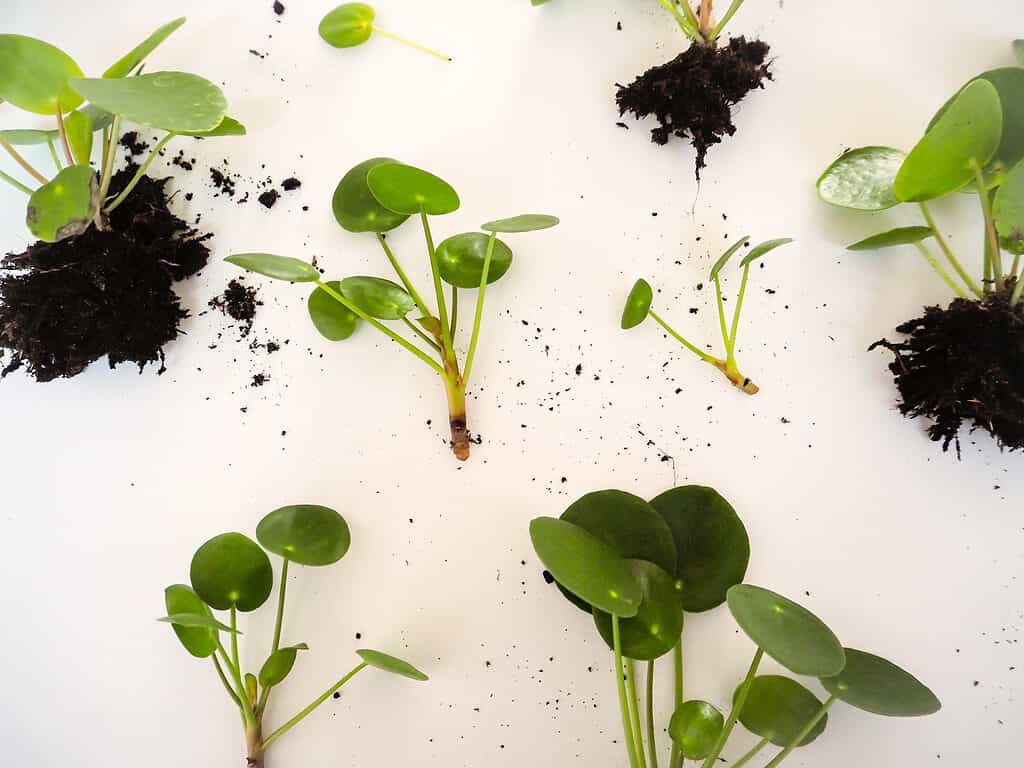
To keep your plant healthy, it is imparative that you remove offsets from time to time.
©Luoxi/Shutterstock.com
Pilea Peperomioides: Placement
Chinese money plants are the perfect addition to almost any room. Their large, round, glossy green leaves can add a pop of color to a sideboard. They are equally at home as a centerpiece on a kitchen table. Regardless of where you position your Pilea Peperomioides, it is sure to attract attention. To really showcase your Chinese money plant, you could hang it, using a wall-mounted bracket, or a ceiling hook. Tips and ideas for hanging a Chinese money plant can be found here. Against the correct backdrop, a Chinese money plant is quite dramatic.
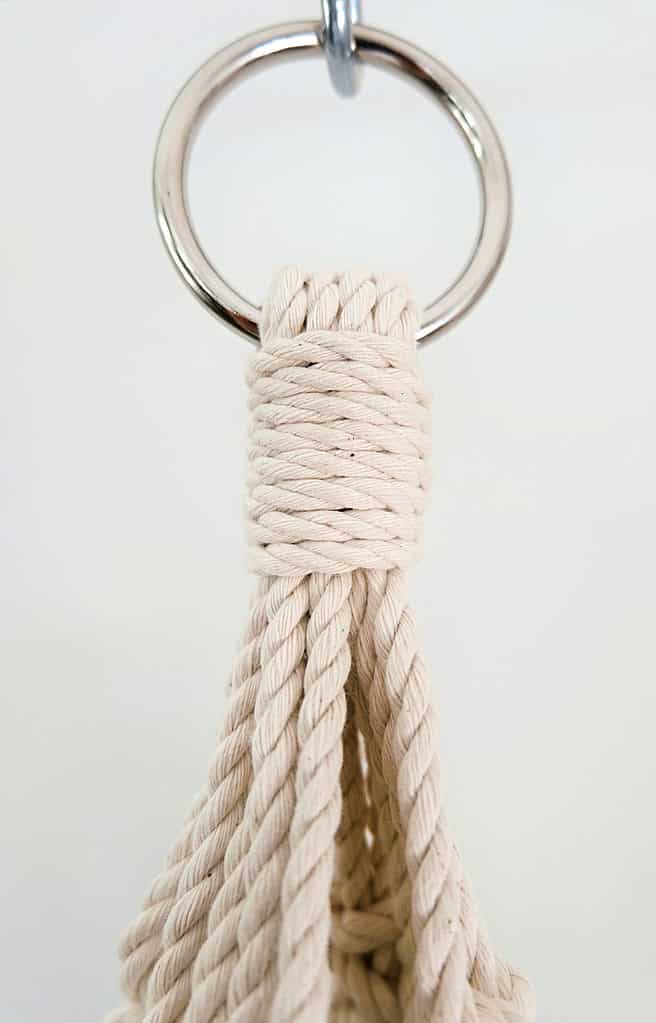
you can hang a Chinese money plant using a wall-mounted bracket or a ceiling hook.
©TippyTortue/Shutterstock.com
Chinese Money plants are popular houseplants for a variety of reasons. Among them are its undemanding nature and its natural loveliness. With very little effort, while making certain not to overwater it, your Pilea Peperomioides will provide you with years of beauty, and dozens upon dozens of offshoots for propagating and passing along.
The photo featured at the top of this post is © DimaBerlin/Shutterstock.com
Thank you for reading! Have some feedback for us? Contact the AZ Animals editorial team.



